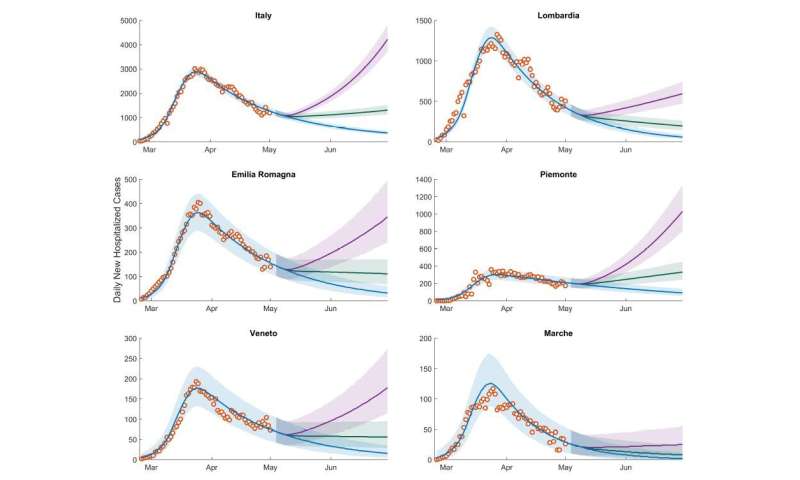A model for keeping the pandemic in check in Italy

A team of researchers has been modeling the potential spread of the coronavirus pandemic in Italy. Using their model, they can calculate the number of exposed and highly infectious individuals and the daily isolation efforts required to bring down the epidemic curve.
In April, a team led by Professor Andrea Rinaldo, the head of EPFL’s Laboratory of Ecohydrology (ECHO), published a paper that presented a model for the spread of COVID-19 in Italy. Since then, the model has been used to investigate different potential outcomes of the pandemic’s progression depending on the measures put in place. The researchers, from the Politecnico di Milano, Ca’ Foscari University of Venice, the University of Padua and EPFL, published these latest results today in Nature Communications.
The mathematical model uses a range of data, including the number of hospitalizations and reported deaths attributable to coronavirus and their distribution among Italy’s 107 provinces—the most granular level of detail available—as well as a mobility factor provided by cellphone tracking. From this information, the model generates the pandemic’s theoretical progression. By adjusting the underlying parameters (mobility, transmission rate, etc.), the team can predict potential scenarios for the virus’s spread.
The impact of easing lockdown measures
“Since we created the model, we have been constantly recalibrating it, for example by factoring in the effects of easing lockdown measures on 4 May,” says Rinaldo. “We also ascertained that the values previously estimated by the model concerning the pandemic’s progression were a reflection of reality.” Confident of their model’s high degree of accuracy, the researchers then generated data that was, in practice, unattainable on the ground.
Currently, our knowledge of the total number of people infected with coronavirus is limited by the number of tests performed. As such, it does not correspond to real conditions. By using the model, however, this critical figure can be estimated. Using the total number of infections, the model can then calculate the daily isolation efforts required to keep the pandemic in check—and, as it turns out, isolating only a small percentage of the population would be sufficient.
With the end of lockdown, the virus’s transmission rate will undoubtedly be higher than that observed when the lockdown was in place. The team looked at various scenarios based on the percentage of this rise. They found that a 40% increase in the transmission rate would result in the epidemic returning to most of Italy’s regions. To stay below this 40% threshold, they posited that 5.5% of exposed and highly infectious individuals would need to be isolated, regardless of whether they were symptomatic. Such measures would bring down the epidemic curve. Moreover, the researchers stress that isolation is most effective when people are in the incubation stage, based on findings that viral shedding peaks just before the onset of symptoms.
The team also examined the impact of relaxing lockdown measures. According to the model, extending the lockdown by one month would have cut the number of infected individuals by around two-thirds.
Continued vigilance
Source: Read Full Article


